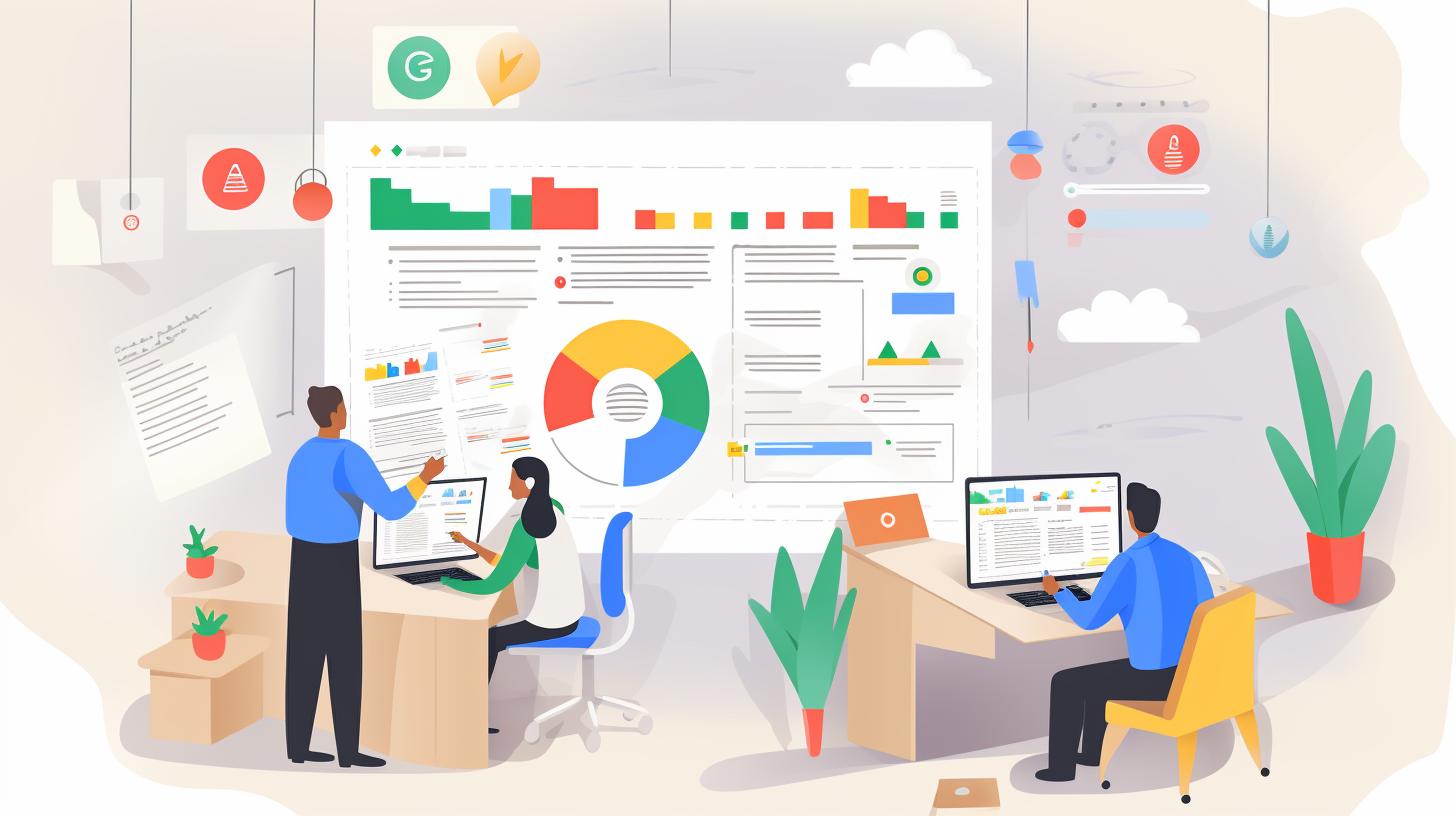Google Workspace and Zoho are two popular online productivity suites that offer a range of tools and features to enhance collaboration and productivity for individuals and businesses. These platforms have gained significant market share in the online productivity space due to their reliable performance and comprehensive set of applications. In this SWOT (Strengths, Weaknesses, Opportunities, and Threats) comparison, we will evaluate the key aspects of Google Workspace and Zoho to identify their respective advantages and disadvantages.
1. Market Overview: Evaluating Google Workspace and Zoho as Online Productivity Suites
Google Workspace, formerly known as G Suite, is a cloud-based productivity suite developed by Google. It offers a wide range of applications, including Gmail, Google Drive, Google Docs, Google Sheets, and Google Slides. With its seamless integration and intuitive user interface, Google Workspace has become a popular choice for businesses of all sizes. It allows users to collaborate in real-time, store and share files, and access their work from any device with an internet connection.
On the other hand, Zoho is another highly regarded online productivity suite that provides a comprehensive set of applications for business productivity. Zoho offers a suite of applications, including Zoho Mail, Zoho Docs, Zoho Sheets, and Zoho Show. It also provides additional tools such as Zoho CRM, Zoho Projects, and Zoho Analytics, making it a versatile solution for businesses. Zoho differentiates itself by offering both cloud-based and on-premises options, providing flexibility for organizations with specific data security or compliance requirements.
2. Strengths: What sets Google Workspace apart from Zoho?
One of the key strengths of Google Workspace is its deep integration with other Google services, such as Google Search and Google Calendar. This integration allows users to seamlessly access and utilize various Google tools within the Workspace suite. Additionally, Google Workspace offers a robust ecosystem of third-party applications through the Google Workspace Marketplace, providing users with a wide range of options to enhance their productivity.
Another strength of Google Workspace is its extensive collaboration capabilities. With real-time editing, commenting, and version control features, multiple users can work on a document simultaneously, making collaboration efficient and effective. Google Workspace also offers powerful search capabilities, allowing users to quickly find files, emails, and information within their Workspace account, saving time and boosting productivity.
3. Weaknesses: Where does Zoho fall short compared to Google Workspace?
While Zoho offers a comprehensive suite of applications, it may not have the same level of brand recognition and user base as Google Workspace. This could be a potential weakness for Zoho, as businesses and individuals may feel more comfortable opting for a well-established platform like Google Workspace.
Another weakness of Zoho is that some of its applications may have a steeper learning curve compared to Google Workspace. Although Zoho provides extensive documentation and support resources, users who are already familiar with Google Workspace may find the transition to Zoho more challenging. This could be a barrier for adoption, especially for organizations with limited resources for training and onboarding.
4. Opportunities: Assessing the growth potential for both platforms
Both Google Workspace and Zoho have significant opportunities for growth in the online productivity market. As remote work becomes more prevalent and businesses continue to embrace cloud-based solutions, the demand for online productivity suites is expected to increase. This presents an opportunity for both platforms to attract new users and expand their market share.
Additionally, both Google Workspace and Zoho can leverage their existing user base to upsell and cross-sell their respective services. For example, Google Workspace can promote its collaboration tools to existing Gmail users, while Zoho can encourage users of its CRM software to adopt its productivity suite for a complete business solution. By capitalizing on their existing customer relationships, both platforms can drive growth and increase revenue.
5. Threats: Identifying the challenges that Google Workspace and Zoho face
One of the major threats for both Google Workspace and Zoho is the increasing competition in the online productivity space. Microsoft Office 365, another major player in the market, offers similar features and functionalities to Google Workspace and Zoho. Microsoft has a strong presence in the business and enterprise market, and its extensive ecosystem of applications and integrations pose a significant challenge for both Google Workspace and Zoho.
Furthermore, data security and privacy concerns are emerging threats for online productivity suites. As more businesses store and collaborate on sensitive information in the cloud, the risk of data breaches and unauthorized access becomes a critical issue. Both Google Workspace and Zoho need to continuously invest in robust security measures and provide transparent data protection policies to address these threats and gain the trust of their users.
In conclusion, Google Workspace and Zoho are both powerful online productivity suites with their own strengths and weaknesses. Google Workspace stands out with its deep integration with other Google services and extensive collaboration capabilities. Zoho, on the other hand, offers a comprehensive suite of applications and provides flexibility with its on-premises option. Both platforms have opportunities for growth in the evolving market, but they also face challenges from competitors and data security concerns. Ultimately, the choice between Google Workspace and Zoho depends on the specific needs and preferences of individuals and businesses.













